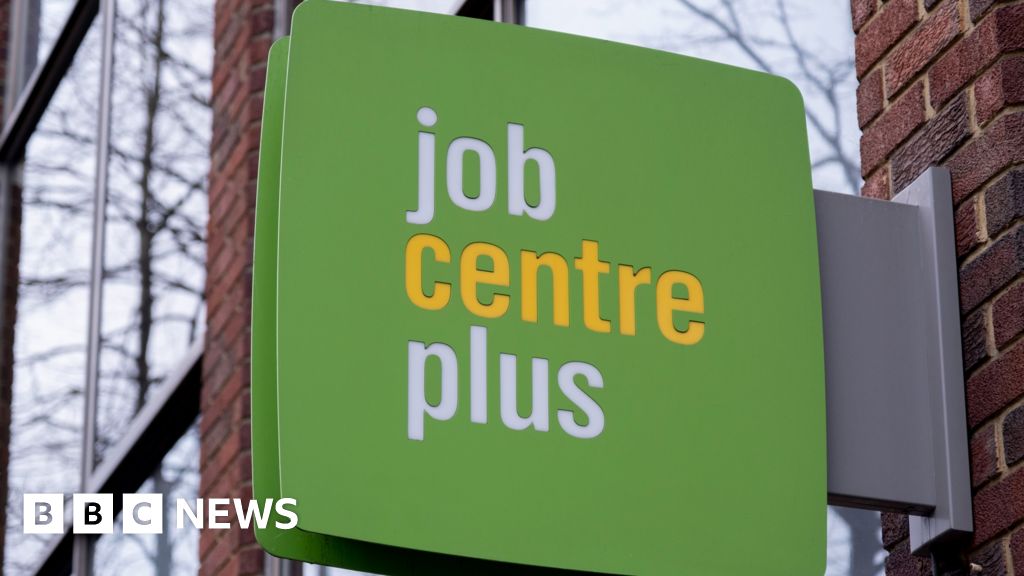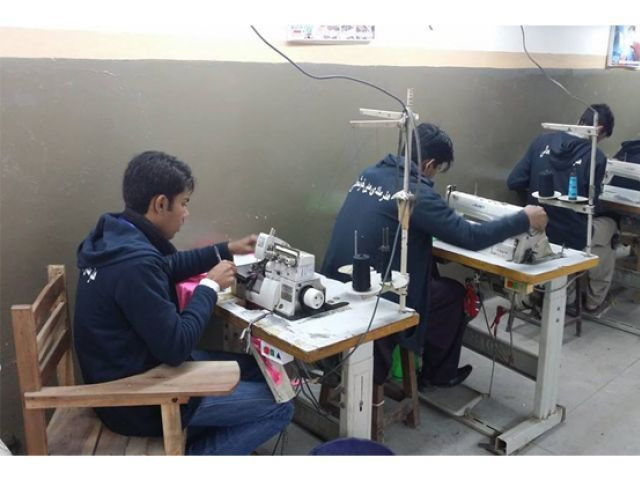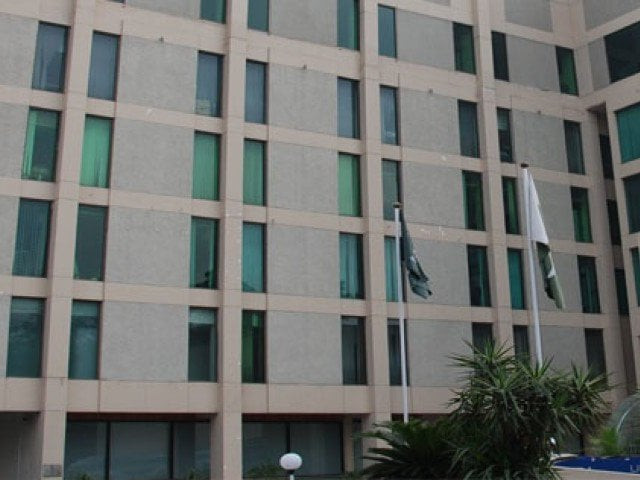Business
Chambers join hands to prop up economy | The Express Tribune

KARACHI:
The Karachi Chamber of Commerce & Industry (KCCI) and the Lahore Chamber of Commerce & Industry (LCCI) have agreed to strengthen cooperation for Pakistan’s economic revival.
During a meeting held at KCCI on Saturday, KCCI President Rehan Hanif and LCCI President Faheemur Rehman Saigol said that Pakistan had great potential despite facing serious challenges, but cautioned that poor policies and neglect of the private sector could make the economic situation worse.
Saigol stressed that Pakistan’s economy continued to survive only because of its immense potential as the country was blessed with abundant natural and human resources not found elsewhere in the region. However, he lamented that “the real problem lies in mismanagement of these resources”.
“With a population of 240 million, Pakistan has a huge consumer market. However, instead of promoting local industries and encouraging import substitution, our policies have increased the country’s trade deficit,” he said.
The LCCI chief explained that the main purpose of his visit to KCCI was to ensure that business communities of Karachi and Lahore were on the same page. “Our strength lies in securing a rightful share in policymaking. Legislation must be framed in consultation with the business community, which is the actual stakeholder and understands how tax collection targets can be effectively achieved,” he said.
He invited KCCI office-bearers to visit LCCI, stating that such an exchange would help establish a historic and much-needed liaison between the two leading chambers. “Only through a unified voice, we can expect to get our issues resolved,” he affirmed.
Businessmen Group Vice Chairman Anjum Nisar emphasised that a unified stance would compel the government to address legitimate concerns.
Business
Pakistan’s manufacturing sector slump: Private investment plunges 46%; experts warn of long-term industrial decay – The Times of India

Pakistan’s manufacturing industry, once considered a key driver of economic growth and employment, is undergoing one of its worst downturns in recent history. The sector has seen a steep 46 per cent fall in private investment over the past six years, raising fears of long-term stagnation among economists and industrial experts.According to The Express Tribune report cited by news agency ANI, private investment in manufacturing dropped from PKR 706 billion in FY2018–19 to just PKR 377 billion in FY2024–25, marking the weakest phase of industrial growth in more than a decade. Ali Imran Asif, Senior Executive Committee Member of the Lahore Chamber of Commerce and Industry (LCCI), warned that the current level of investment was “not enough to even replace depreciating machinery,” suggesting a deep erosion of Pakistan’s industrial foundation.“We are not dealing with a short-term dip; we are watching our industrial base disintegrate,” Asif said, as per The Express Tribune. He stressed that without structural reforms focused on productivity, innovation, and competitiveness, the country could face prolonged industrial paralysis.The combined contribution of the manufacturing and mining sectors to Pakistan’s GDP has remained stagnant at around 13.2 per cent over the past six years. Frequent policy changes, high energy costs, and volatile currency movements have severely affected export-oriented sectors such as textiles, leather, and engineering goods. Large-scale manufacturing output fell 1.5 per cent in FY25, reversing the 0.92 per cent growth recorded in FY24.In contrast, neighbouring economies like India and Bangladesh have maintained strong industrial growth supported by stable policies and export diversification. Economist Shahid Saleem noted that Pakistan’s slump is not merely the result of high interest rates but also reflects policy inconsistency and eroding investor confidence. Import restrictions and weak domestic demand have forced many factories to run below capacity, he added.Experts, as cited by ANI, warned that unless Pakistan swiftly formulates a credible industrial revival plan and ensures policy stability, the manufacturing sector’s decline will deepen further, undermining exports, employment and broader economic resilience.
Business
More than 1,000 flights cancelled as US air traffic cuts enter second day

 Getty Images
Getty ImagesMore than 1,400 flights to, from, or within the US were cancelled on Saturday after airlines were told this week to cut traffic during the federal government shutdown.
Nearly 6,000 flights were also delayed, down from over 7,000 delays on Friday, according to flight tracker FlightAware.
The Federal Aviation Administration (FAA) announced earlier in the week that it would be reducing air travel capacity by up to10% at 40 of the nation’s busiest airports as air traffic controllers, who are working without pay during the shutdown, report fatigue.
Republicans and Democrats remain divided over how to end the impasse in Congress as the shutdown, which began 1 October, continues.
Saturday marked the 39th day of the longest shutdown in history as Republicans and Democrats still have not agreed on a funding resolution to reopen the government.
Senators are in Washington over the weekend for bipartisan negotitations aimed at ending the shutdown, which is beginning to be felt by more and more Americans amid cuts to food aid payments and the flight disruptions.
In a statement on Saturday, American Airlines urged “leaders in Washington, D.C., to reach an immediate resolution to end the shutdown”.
New Jersey’s Newark Liberty International Airport was experiencing some of the longest wait times. As of Saturday afternoon, arrivals to the airport were delayed by an average of more than four hours, while departures from the airport were delayed by an average of 1.5 hours, according to the FAA.
The airports with the most cancelled flights on Saturday, both to and from the location, were Charlotte/Douglas International, Newark Liberty International, and Chicago O’Hare International, according to FlightAware.
Departures to John F Kennedy International, Hartsfield-Jackson Atlanta International, and La Guardia were delayed by nearly three hours, over 2.5 hours, and about an hour, respectively, the FAA reported as of Saturday afternoon.
With the Thanksgiving holiday approaching on 27 November, it’s one of the busiest travel seasons of the year in the US.
It’s not just commercial flights that have been affected. Restrictions on private jets are also in place, Secretary Duffy said in a Saturday post on X.
“We’ve reduced their volume at high traffic airports — instead having private jets utilize smaller airports or airfields so busy controllers can focus on commercial aviation,” Duffy wrote. “That’s only fair.”
And things will likely get worse in the coming days as the FAA increases the percentage of cancelled flights.
On Thursday, the agency announced that the flight reductions would be gradual, starting at 4% of flights on Friday before rising to 6% by 11 November, 8% by 13 November, and the full 10% by 14 November.
The FAA said the cuts were necessary to maintain safety as air traffic controllers have been overworked during the shutdown.
As essential workers, the controllers are required to continue working without pay, and as a result, many have called out sick or taken on second jobs to afford necessities, unions say.
The controllers are just some of the 1.4 million federal workers who have either been working without pay or been put on forced during the shutdown.
Another factor impacting air travel is that most of the Transportation Security Agency (TSA) 64,000 agents are also not being paid while the shutdown is in place.
During the previous government shutdown, under US President Donald Trump in 2018, it was found that up to 10% of TSA staff chose to stay at home rather than work for free.
Business
Inquiry to review rising levels of youth inactivity

An independent review into the rising number of young people not working or studying is being launched by the government.
Former Labour Health Secretary Alan Milburn will lead the inquiry into “Neets” – the acronym for young people who are not in education, employment or training.
According to Work and Pensions Secretary Pat McFadden, the persistently high number of 16-24 year olds falling out of education or work is a “crisis of opportunity” requiring urgent action.
It is not a new problem but the number of young people who are Neet – now one in eight – has been rising in recent years and is approaching one million.
A quarter cite long-term sickness or disability as a barrier and the number claiming health and disability benefits is rising too.
The government says Alan Milburn’s review will dig into the reasons behind the rise and examine ways of cutting the long-term costs of youth inactivity and getting young people off benefits and into work.
Its conclusions will be published next summer.
Prime Minister Sir Keir Starmer has called the broader benefits system unsustainable and unfair but so far selling welfare reform to Labour backbenchers has proved a political minefield for Number 10.
According to the Department of Work and Pensions, the number of young people claiming UC Health and Employment Support Allowance has risen by more than 50% over the past five years.
Some 80% of young people on the UC Health element currently cite mental health reasons or a neurodevelopmental condition.
Asked whether he thought over-diagnosis was fuelling a mental health crisis among young people, McFadden was quoted by the Sunday Times as saying: “I don’t want to play amateur doctor. I want to approach this with sensitivity.
“The question I’m asking is, given the higher reported number of these conditions among young people, what is the best policy response? I don’t believe there should be an automatic link between diagnosis and benefits.”
“If we get this right,” he added, “the prize is huge: transforming lives and life chances, with the pent-up potential of the next generation firing our economy and building a better future for all.
“We cannot afford to lose a generation of young people to a life on benefits, with no work prospects and not enough hope.”
Milburn said his review would be “uncompromising”, and expose any failings in employment support, education, skills, health and welfare.
“We cannot stand by and let a generation of young people be consigned to a life without employment or prospects,” he said. “It’s clear urgent action is needed.”
-

 Tech1 week ago
Tech1 week agoDisney content has gone dark on YouTube TV. Here’s what customers should know
-

 Business1 week ago
Business1 week agoChocolate’s reign over Halloween is under threat from inflation, tariffs and high cocoa prices
-

 Business1 week ago
Business1 week agoAndy Jassy Reveals Real Reason Behind Amazon 14,000 Job Cuts — And It’s Not AI
-
Sports1 week ago
Ravens are back in the hunt after two straight wins and Lamar Jackson’s return
-

 Tech1 week ago
Tech1 week agoKeep Tabs on Your Pets and Kids With the Best Indoor Security Cameras
-

 Sports1 week ago
Sports1 week agoTudor’s Juve exit means McKennie must prove himself all over again
-

 Fashion1 week ago
Fashion1 week agoIndia’s Raymond Lifestyle Ltd’s Q2 FY26 revenue rises 8% to $211.5 mn
-

 Politics7 days ago
Politics7 days agoPolitical violence kills almost 300 since Hasina’s fall: rights group










